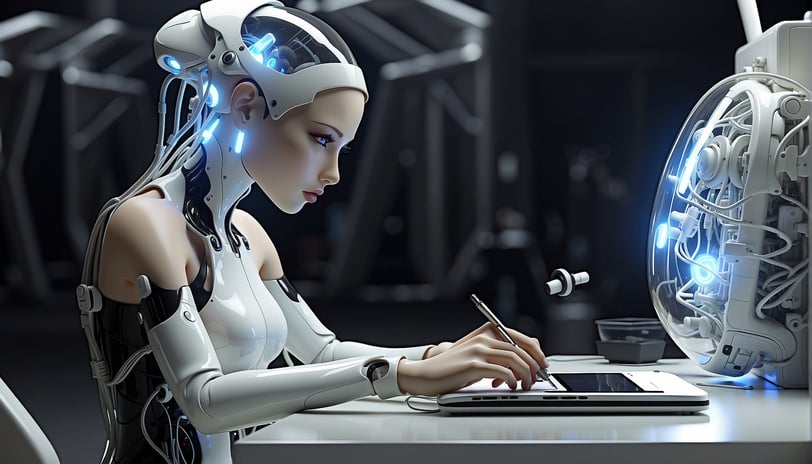Designers and AI
Crafting a Creative Future Together
Walid Ghali
10/22/20232 min read


In a rapidly evolving world, where the line between humans and technology blurs, designers often find themselves pondering a fundamental question: Can designers be replaced by AI? The answer is a resounding "yes." However, this shouldn't incite panic among human designers; instead, it should serve as an opportunity for us to adapt and embrace the future.
The essential realization is this: Humans aren't in a head-to-head competition with intelligent machines; they're the creators of these very machines designed to enhance our efficiency. So, if you're a designer concerned about AI encroaching on your territory, it's time for a shift in perspective on design to fully leverage this transformative partnership.
Designers, now equipped with AI as their indispensable assistants, are poised to redirect their focus towards the emotional experience. Consider my roots, where Egypt witnessed the creation of one of the world's wonders, the Pyramids of Giza. The angle and shape of these pyramids weren't the result of magic or extraterrestrial intervention, but rather a result of extensive trial and error over four dynasties. This example underscores that exceptional design demands time and experimentation. Unfortunately, in today's fast-paced world, time is our most precious commodity as we race to produce high-quality products efficiently.
Wondering if you need an AI designer on your team? The answer lies in how effectively you handle data, how efficiently you incorporate data into your designs, and how swiftly you operate. Have you ever heard of "generative design"? It's an iterative design process that involves a program generating outputs meeting certain constraints and a designer fine-tuning those outputs. The program can be operated by a human with pen and paper or an artificial intelligence like a generative adversarial network.
Numerous industries, including automotive, aerospace, and construction, have harnessed the power of generative design processes. It's revolutionized the efficiency of designing products that once consumed substantial time. The future of designers lies in their ability to focus on creativity and aesthetics while machines assist in optimizing ideas. Much like artists, designers set trends by breaking traditional molds and gaining social approval. AI serves as a valuable partner by testing these concepts at various levels, conducting user research, and tailoring the results to different audiences, even predicting the product's lifecycle with economic projections.
Instead of viewing machines as opponents, we should see them as tools that enhance our capabilities. The fear of competition has recurred throughout history, yet we've consistently embraced and adapted to these changes, evolving in the process. Designers, now supported by AI, will place a greater emphasis on the emotional experience, a realm where human touch prevails. We will live and breathe emotions while letting AI, like a genie in a lamp, fulfill our wishes.
This evolving partnership between designers and AI offers endless opportunities for creativity and innovation, marking an exciting chapter in the world of design. So, rather than fearing change, we should eagerly anticipate it.
